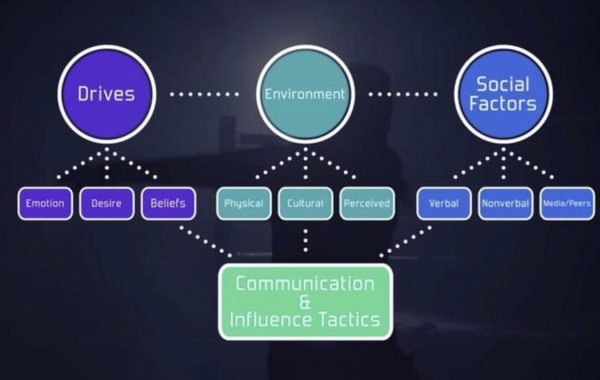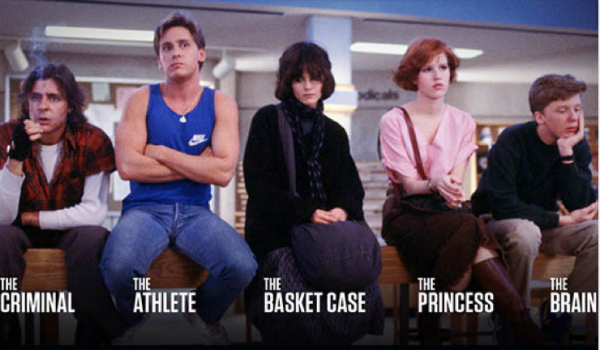The message was both clear and humbling just weeks into the book’s release, people were infatuated with the archetypes.
“Can you create a manual that tells me and my staff how to best coach each archetype?”
“Do the archetypes apply to parents, co-workers, colleagues and sport coaches?”
“Can you create a standardized questionnaire that helps us better define the types of people we are working with?”
All of these questions are rational responses, and are often well-intentioned, but they are also WAY off the mark!
One thing that I mention not only in my book, but in my subsequent online course and lectures is that archetypes are NOT static. They are fluid and context dependent.
In other words, they are inherently incomplete and ever-evolving. Not an answer or absolute, but rather a mold or scaffold.
I’ve learned that coaches do not want to hear this!

HAS OUR INCREASED EASE OF ACCESS TO INFORMATION MADE US AS COACHES LAZY?
Does anyone else see the irony that, strength coaches- people who often receive advanced, science-based degrees in subjects such as physiology, biomechanics, motor-learning and other related disciplines- seemingly care enough to understand the interdependent “it depends” nature of physical training, yet expect a binary approach to the complex, messy nature of human interaction and behavior?
To me, our recent laziness is as evident as the risk of driving on an icy-covered street during a December snowstorm. The only difference I suppose in that analogy is the ice is clear!
I’m not trying to be rude in asserting this, but I am frustrated with the current “easy route to expertise” state of coach development right now where people seem to only want the answers that fit their agenda or commitment level.
Many within our field (and those like it), so desperately want to be able to break down and systematize their interactions with individuals the same way a strength coach would prescribe sets and reps, or an engineer would address the construction of some sort of machine.

In other words, they don’t mind if it is complicated, so long as it fits a model that is easy to recognize, identify and adapt to.
Where is the skill in that?
The flaw in this thought process and approach has already been discussed in great depth in my course “Bought In,” as well as within other book chapters and blog articles, so I’m going to refrain from diving into it again here, but the gist is that people are complex- and the dynamics between two individuals are never going to be fixed. You have to always consider the context, environment and social factors at play!
Yes coaches, this means YOU have to do the work! It also means that you are going to have to invest time and effort into diving deeper into the social science domains if you want to more fully understand as to why there will never be a bespoke “people playbook” for you and your staff to operate off of.
And to think, for decades the term “the art of coaching” was simply depicted as an ambiguous cliche of warmth and empathy. Maybe it was because in reality it is a much tougher topic to understand, or a more involved process to commit to than other skills required for the job.
I’ll leave that one for the angry social media mobs to debate…
To my earlier point, what those before me have detailed within the research is the time has come for coaching to be recognized as a complex, multivariate, interpersonal and dynamic process; grounded within research of interpersonal influence, micropolitics, and social cognition.
Coaches should not aim to be cardboard cut-outs and athletes as shouldn’t be depicted as static, non-thinking pawns.
There are levels to this.

Environment can alter our behavior and perceptions more so than perhaps any other variable aside from social comparisons and the influence of peer groups. It can even do so enough that it likely deserves an archetypical breakdown of it’s own given the wide breadth of physical environments studied in the literature.
Even Nobel Prize winner Daniel Kahneman understood that we are influenced far more by the “environment of the moment” than we would like to realize. But quotes and research alone won’t provide answers, we still have the personal accountability part to factor in if we want the lessons to apply.
Stop for a moment and list at least 5-10 occurrences where you behaved in a way that wasn’t consistent with your usual approach.
- Where were you when it happened?
- Who was with you?
- What were the circumstances (context)?
- How did you behave?
- How would you describe the physical and contextual nature of the environment?
- Do you believe it was designed a certain way on purpose?
I’m respectfully trying to challenge you here to be a bit more self-aware, and in doing so realize that the answers YOU want, won’t come until you have gone down the rabbit hole yourself, and put yourself under the microscope first.
As you do so, you will begin to discover that Goffman really was correct in some respects when he said that “We are all just actors trying to control and manage our public image, we act based on how others might see us.”

People will go to great lengths to manage this self-image, and what coaches and leaders of all types need to realize is that if you were to take your biased observations at face-value, and try to create some sort of rigid system in which they all fit you are only setting yourself up for failure. Yes, archetypes- as incomplete and intriguing as they are- are all around us, but sadly self-awareness and the ability to discern that people will behave differently depending on context is not.
As a leader, the only thing you can count on with near 100% certainty is that people will behave in a myriad of ways depending on their perceptions of the environment, those they are interacting with, the nature of the request, and the timing of the request. Even after assessed those factors you must still consider how the culture they were raised in plays a role, along with the sports they play, and the nature/result of their experiences with past coaches or influencers.
All of these variables serve as power-brokers of influence in their own right.
No, there will be no “one size, fits all” approach to people, archetypes and the like created, and if someone promises otherwise my advice is to run.
The power lies in your ability as a coach to learn how to better identify, analyze and adapt to variables that impact human performance, for this is the true nature of the “art of coaching” and more importantly, the true nature of mastery within any craft in general.
Doing so requires much more than the acquisition of information, it requires a commitment to being an apprentice in a craft where none of us will ever truly become a master.
Want to continue the discussion and dive deeper? I offer a wide variety of resources on topics ranging from human behavior, leadership development and communication here.
Cassidy, T. G. (2004). Understanding Sports Coaching.
Sparkes, A. and Templin, T (1992) ‘Life histories and physical education teachers: exploring the meanings of marginality’, in A. Sparkes (ed.) Research in Physical Education and Sport: Exploring Alternative Visions, London: Falmer Press.



